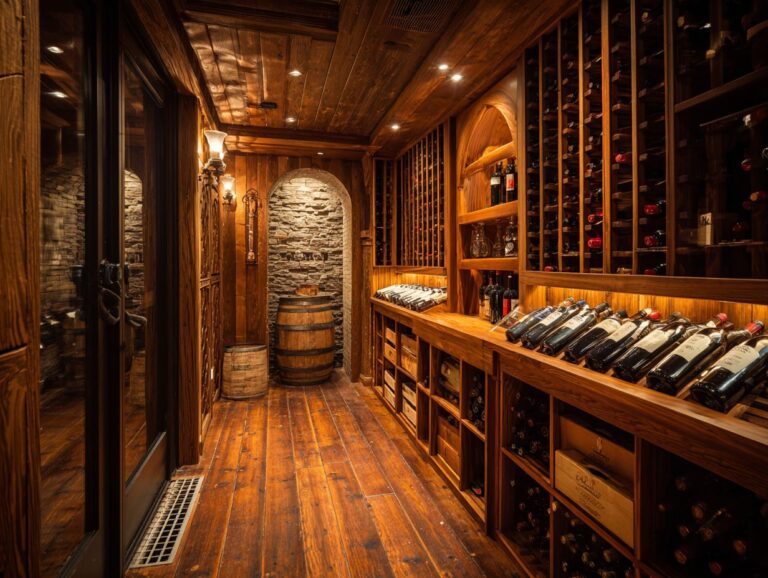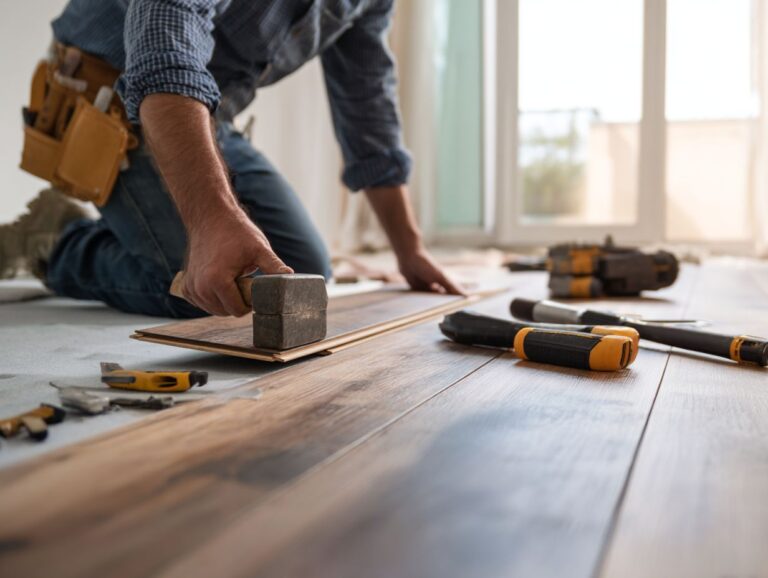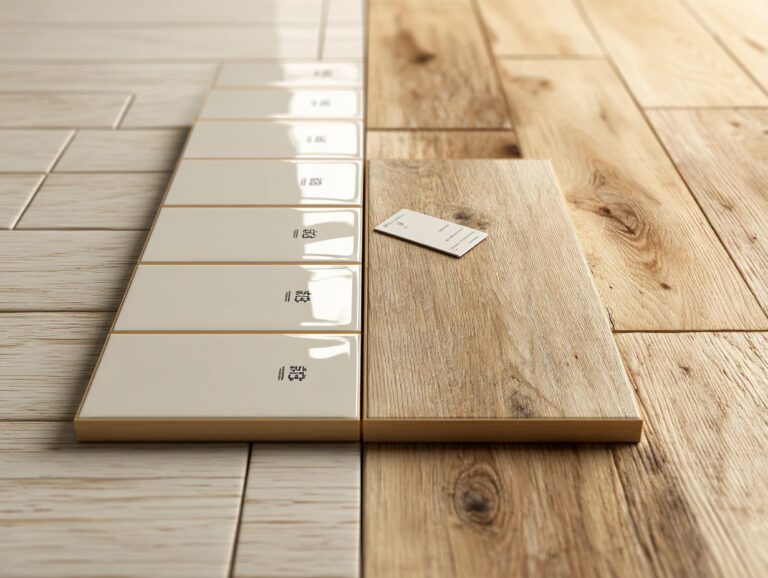Flooring Installation Labor Rates by Region
When planning your next flooring project, knowing the labor costs for flooring installation in different areas is important. Whether you’re opting for laminate flooring, vinyl flooring, or hardwood flooring, costs can vary significantly. This guide breaks down the installation costs by square foot. It will help you see how prices vary in different areas, so you can make informed choices for your home. Learn how these factors affect your spending and make the installation process easy.
Key Takeaways:
Contents
- Overview of Regional Variations
- Northeast Region
- Midwest Region
- South Region
- West Region
- Comparison of Labor Rates by Region
- Flooring Installation Labor Cost Statistics by Region
- Additional Considerations
- Frequently Asked Questions
- What are flooring installation labor rates by region?
- Which regions have the highest flooring installation labor rates?
- How do flooring installation labor rates vary across different regions?
- Do flooring installation labor rates include the cost of materials?
- Can I negotiate flooring installation labor rates with a contractor?
- Are there any other costs I should consider when budgeting for flooring installation labor rates by region?
Importance of Understanding Labor Rates
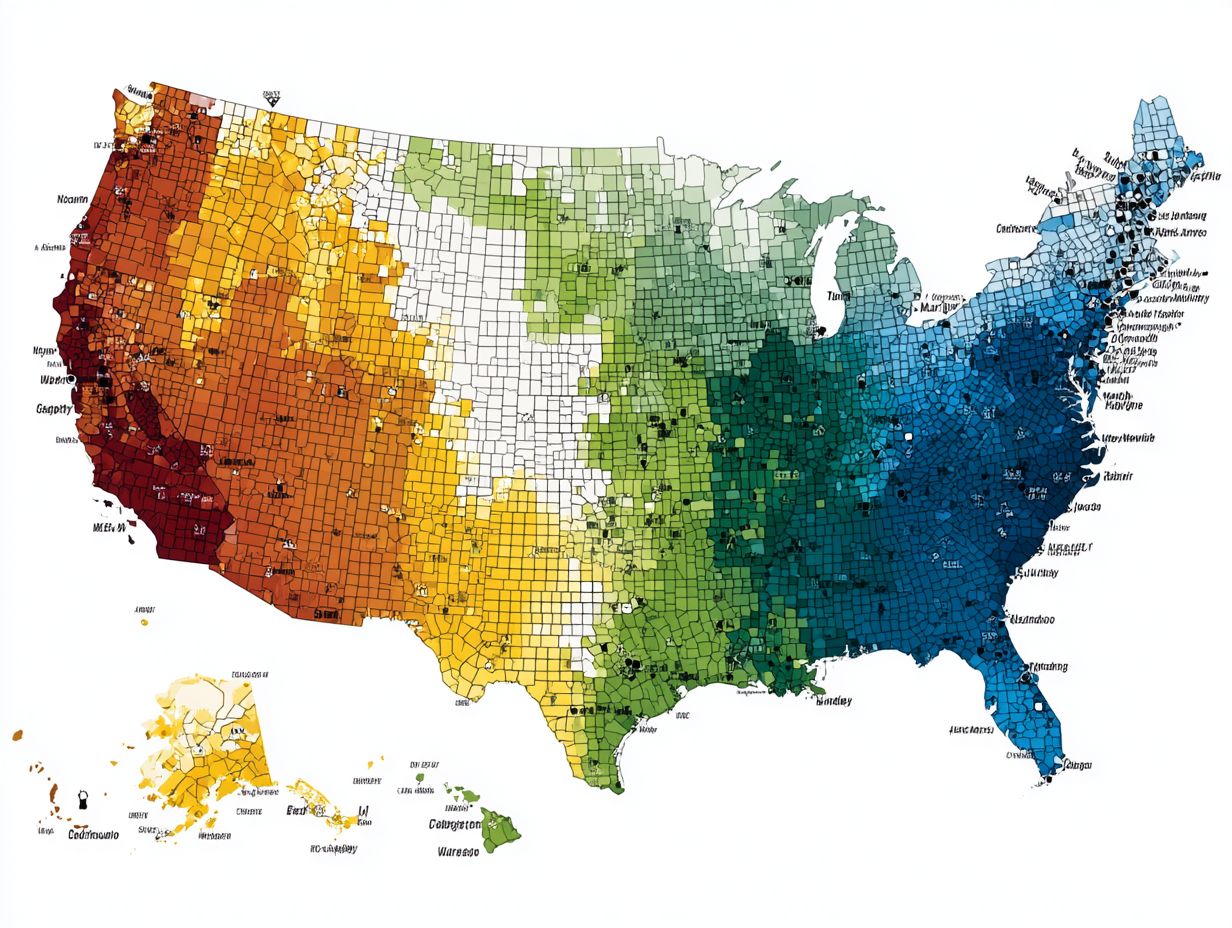
Labor charges can make up to half of the total cost of installing flooring, so it’s important to understand these fees for good budgeting.
Knowing local wages is important. For instance, metropolitan areas may charge $4 to $8 per square foot, while rural settings might range from $2 to $5.
Obtaining multiple quotes can reveal price variations tied to experience and the complexity of the job. Websites like HomeAdvisor or Angie’s List can give you information about local contractors and typical costs.
Consider project details like the condition of the subfloor, which might lead to more labor time and higher costs. This active method guarantees complete budgeting for your flooring project. For further insights, see also: common flooring installation mistakes and how to avoid them to ensure your project stays on track.
Factors Influencing Labor Rates
Multiple factors influence labor rates, including flooring type, regional demand, and contractor experience, which can vary widely across the U.S.
For instance, hardwood flooring installation typically incurs higher labor costs compared to laminate due to the skill level required.
In regions with a booming construction market, like San Francisco, you might see rates jump by 15% or more during peak months, such as summer.
Picking a knowledgeable contractor often results in higher quality work, decreasing the chances of needing repairs later.
To determine reasonable labor costs, homeowners should obtain multiple quotes from local contractors, considering the type of flooring and the time of year.
Overview of Regional Variations
Flooring installation costs differ widely in different parts of the United States, affected by the area’s economy and the needs of the local market.
Definition of Regions
The U.S. is usually split into four main areas: Northeast, Midwest, South, and West, each with its own patterns of labor costs.
States such as New York and Massachusetts in the Northeast typically have the highest labor costs because of a large population and the need for experienced workers.
The Midwest, including states like Ohio and Indiana, typically offers more affordable labor, benefiting from agricultural and manufacturing industries.
The South, with states such as Texas and Florida, generally has lower costs due to a less expensive cost of living and a focus on service and hospitality sectors.
The West, particularly California, faces high labor costs driven by technology and entertainment industries but offers high wages for specialized skills.
General Trends Across the U.S.
General trends indicate that labor rates can range from $1.50 to $7.00 per square foot, with the most affordable rates typically found in the Midwest.
In the Midwest, states like Ohio and Indiana offer rates averaging around $1.50-$3.00 per square foot, attracting various industries. Conversely, the West Coast, particularly in California, sees rates between $4.00 to $7.00 due to higher living costs and regulations.
In San Francisco, experienced workers may earn more than $7.00, whereas in rural areas, wages can be as low as $3.50. Understanding these local variations helps companies budget accurately and make informed decisions for labor-intensive projects.
Northeast Region
The Northeast region typically has the most expensive labor costs for installing floors, due to high demand and living expenses.
Average Labor Rates
In the Northeast, average labor rates typically range from $4.00 to $7.00 per square foot for flooring installation.
Specifically, labor rates vary by flooring type. Laminate installation usually costs between $4.00 and $5.50 per square foot, which is an affordable option for homeowners who are mindful of their budget.
Hardwood installation generally costs between $5.50 and $7.00 per square foot, reflecting its premium nature and durability. Vinyl flooring, an increasingly popular option, typically falls in the $4.50 to $6.00 range.
Get quotes from different contractors and consider factors like site accessibility and project size to plan your budget accurately.
Cost Influencers in the Northeast
Main reasons for labor expenses in the Northeast are the strong need for trained workers, changes in work volume with the seasons, and the difficulty of city-based projects.
These elements significantly influence project pricing. For instance, cities like New York and Boston often face seasonal spikes in demand during spring and summer, driving hourly wages upward.
Urban installations often need expert knowledge to handle government regulations, which increases labor expenses. When contractors try to outdo each other, costs may increase due to a shortage of trained workers.
To reduce costs, think about hiring contractors during slower periods or using remote workers for certain tasks, using technology to manage projects well.
Midwest Region
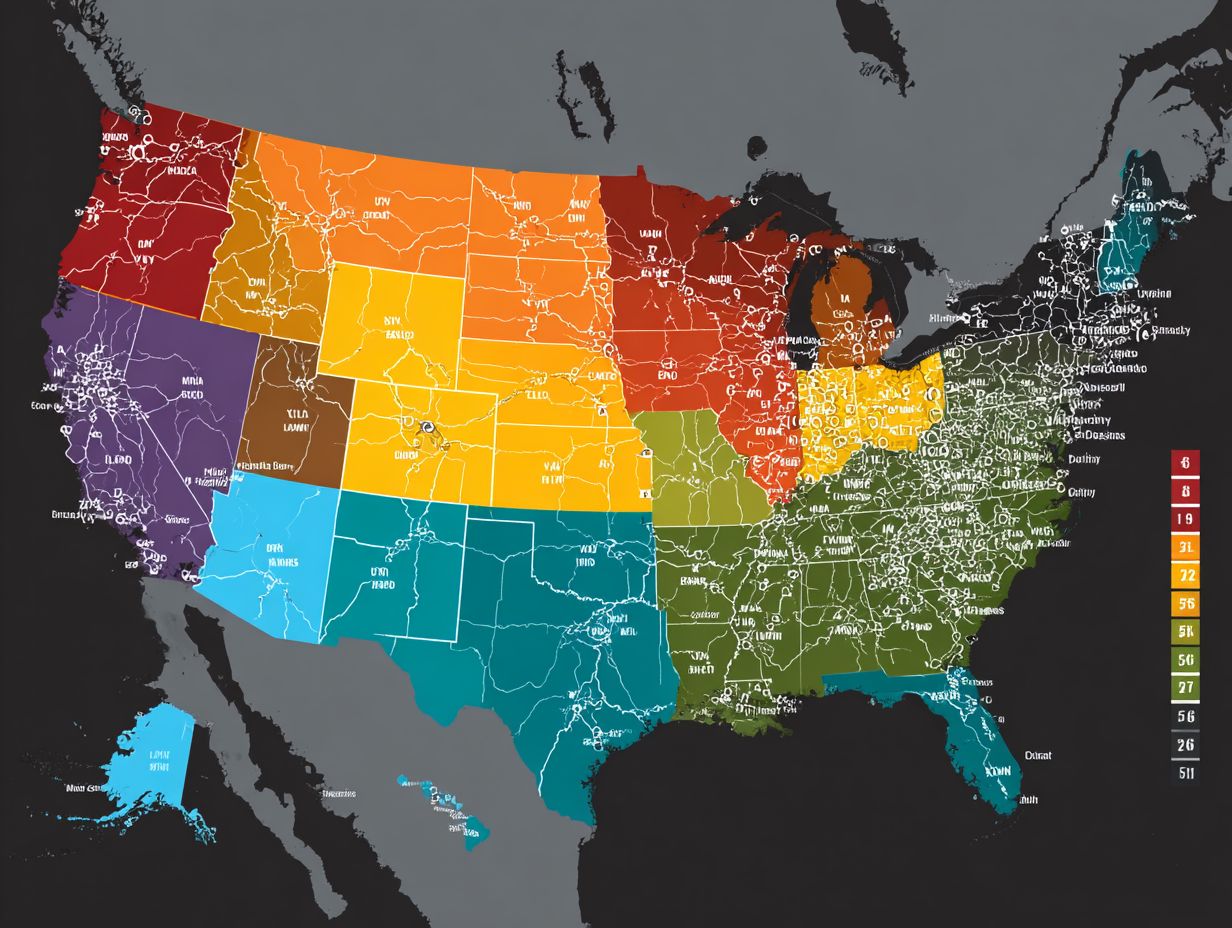
Labor costs in the Midwest are usually lower than in other areas, showing a steadier economy and cheaper living expenses.
Average Labor Rates
In the Midwest, installing flooring usually costs between $2.00 and $4.00 per square foot, which is quite affordable for this service.
In contrast, the Northeast typically sees labor rates between $4.00 and $7.00 per square foot, reflecting higher costs of living and labor.
Below is a comparison of average rates in different Midwest areas against those in the Northeast:
| Region | Average Rate (per sq. ft.) |
|---|---|
| Midwest | $2.00 – $4.00 |
| Northeast | $4.00 – $7.00 |
When estimating flooring projects, consider both the region and the material type, as specialized materials like hardwood may incur higher labor costs.
Cost Influencers in the Midwest
In the Midwest, factors like lower demand for specialized labor, availability of materials, and regional economic conditions significantly influence labor costs.
Cities like Chicago require more trained workers such as electricians, resulting in higher wages. Conversely, in rural regions, the workforce may exceed demand, keeping costs lower.
Seasonal fluctuations also play a role; construction labor costs often rise during the summer months when projects peak. To address these variations, companies can rely on local workforce reports and information from regional economic development organizations to accurately estimate expenses.
Engaging with local suppliers can help in securing better rates on materials, further impacting overall labor costs.
South Region
Labor costs for flooring installation in the South vary widely, depending on local economies and demand.
Average Labor Rates
In the South, flooring installation labor rates typically range from $1.75 to $5.00 per square foot, depending on the city and flooring type.
Major cities such as Atlanta, GA, typically see rates around $3.50 per square foot for hardwood flooring, while in Birmingham, AL, rates may drop to about $2.50. In New Orleans, LA, the price can reach up to $4.00 for tile installation due to higher demand.
These variations stem from factors like cost of living and local market conditions. Contractors should look into local price trends and set their bids to match those rates.
Cost Influencers in the South
Labor costs in the South are affected by the availability of experienced workers, the level of competition among builders, and the region’s economic growth.
In places with successful job training and trade schools, there are more qualified workers, which helps maintain stable costs. For example, states like Texas have invested heavily in technical education, leading to a qualified workforce that reduces wage inflation.
In places where the economy is expanding quickly, such as certain areas in Florida, the need for experienced workers can result in increased pay. Stakeholders should analyze local market conditions and available workforce development initiatives to better forecast labor costs and make informed budgeting decisions.
West Region
Labor costs in the West can differ greatly, mainly due to economic differences and levels of city development.
Average Labor Rates
In the West, average labor costs for flooring installation hover between $3.50 and $6.50 per square foot, with urban areas typically higher.
For a clearer comparison, consider average labor costs in major cities. In Los Angeles, rates can hit up to $6.00, while in San Francisco, they may soar to $6.50. In contrast, cities like Denver and Phoenix show lower averages, at approximately $4.00 and $3.75, respectively.
This variation often reflects local demand and cost of living factors. When budgeting for flooring projects, it’s essential to obtain multiple quotes and factor in these regional differences to avoid unexpected expenses.
Cost Influencers in the West

Key elements that influence labor expenses in the West include the demand in the local area, the availability of trained workers, and the costs of certain flooring materials.
Regional economic conditions play a significant role. For instance, in booming markets like San Francisco, labor costs can escalate by 20% compared to areas with slower growth, such as Cleveland.
Material prices also fluctuate based on supply chain stability; for example, the cost of hardwood flooring has risen due to recent timber shortages. Homeowners should consider these factors while budgeting, as tapping into local contractor networks or utilizing platforms like Thumbtack can help lower costs by sourcing competitive quotes.
Comparison of Labor Rates by Region
Looking at labor rates across regions shows clear differences.
The Northeast usually has the highest rates, while the Midwest typically has the lowest.
Flooring Installation Labor Cost Statistics by Region
Flooring Installation Labor Cost Statistics by Region
Labor Costs and Material Expenses: Material Costs per Square Foot
The Flooring Installation Labor Cost Statistics by Region Information provides useful details about the price changes of materials per square foot for different types of flooring. Knowing these costs is important for planning and making choices in building and renovation projects.
Labor Costs and Material Expenses analysis reveals significant cost differences across flooring types:
- Hardwood Flooring stands as the most expensive option at $8.5 per square foot. The price is higher because hardwood is strong, looks good, and can increase the worth of a property. Its cost is influenced by the type of wood, finish, and installation complexity.
- Laminate Flooring costs significantly less at $4.0 per square foot. Laminate presents a more budget-friendly alternative to hardwood, offering a similar look with easier maintenance and installation.
- Tile Flooring comes in at $5.5 per square foot. Tile is popular in areas requiring water resistance, such as bathrooms and kitchens. The cost can change depending on the type of tile, its design, and the details of installation.
- Vinyl Flooring is the cost-effective choice at just $2.0 per square foot. It’s favored for its affordability, ease of installation, and versatility in different settings.
- Underlayment adds an extra layer of cost at $1.25 per square foot. This material is essential for cushioning, soundproofing, and moisture protection, enhancing the longevity and comfort of the installed flooring.
This data highlights the need for careful selection based on budget, desired aesthetics, and functional requirements. By comprehending the material costs per square foot, homeowners and contractors can better plan their projects, ensuring optimal outcomes within budgetary constraints.
Chart of Average Rates
The following chart illustrates the average labor rates for flooring installation across the four U.S. regions, highlighting clear disparities.
In the Northeast, labor rates average around $5.50 per square foot, reflecting higher living costs. The Midwest follows closely with an average of $4.75, while the South comes in lower at about $4.25.
Meanwhile, the West region shows the widest range, with rates starting at $5.00 but often exceeding $7.00 in urban areas. Different factors can significantly affect the overall cost of your flooring project, so it’s wise to compare contractors in your area and collect multiple estimates to secure the best price.
Analysis of Regional Differences
Regional differences in labor rates can impact the total flooring installation costs significantly, influencing project budgets and choices.
For instance, labor costs in urban areas often exceed those in rural locations, sometimes by as much as 30%. This disparity can lead consumers to prioritize budget-friendly regions for installation, especially for large projects.
For example, hiring contractors in a state like Texas may yield lower total costs compared to California. Tools like HomeAdvisor or Angie’s List can help compare local labor rates and get quotes for specific projects, allowing homeowners to make informed decisions that best suit their financial capabilities and project timelines.
Additional Considerations
Aside from differences in regions, there are other things to think about when looking at the costs for flooring installation work.
Impact of Labor Skill Levels
The skill level of labor can raise installation costs significantly, with experienced contractors costing 20-30% more than average laborers.
For instance, an experienced electrician may charge $100 per hour, while a less experienced one might only charge $70.
If the installation takes 10 hours, the experienced worker might charge $1,000, while the beginner may charge $700.
Consider the benefits of hiring experienced workers, like fewer errors and quicker project completion, along with the higher expenses.
To make informed decisions, create a chart that shows each contractor’s prices, skills, and reviews to help you choose the one that fits your budget and needs.
Seasonal Variations in Labor Rates
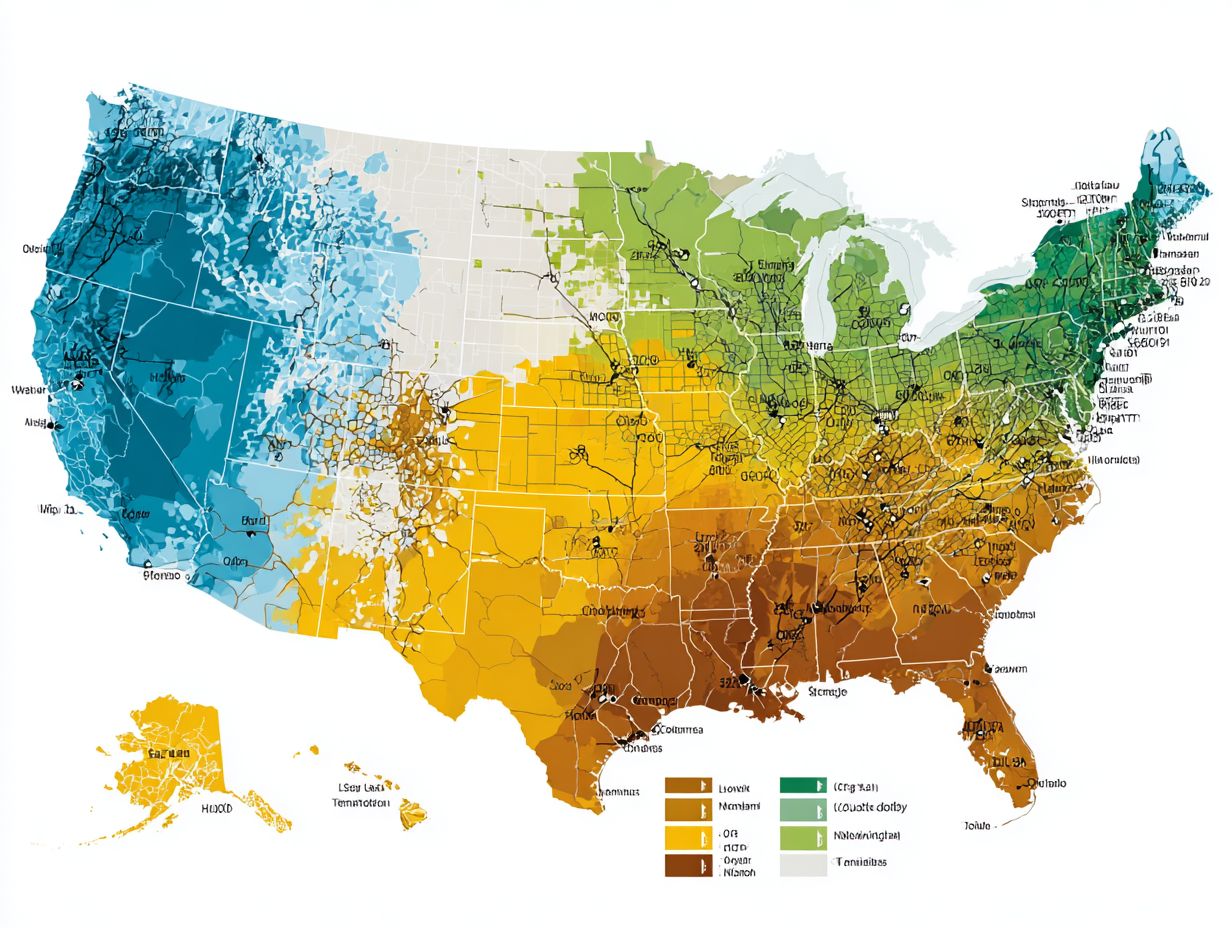
Labor rates for flooring installation often fluctuate seasonally, with peak demand in spring and summer leading to higher costs.
During the spring and summer months, homeowners are more likely to initiate renovation projects, causing labor rates to rise by 10-20%. For example, scheduling installation in April or May may cost $5-10 more per square foot compared to the offseason.
Conversely, fall and winter months-especially December to February-typically see a drop in demand, resulting in more competitive pricing. Homeowners can save significantly by planning installations during these slower periods, keeping an eye on local contractors who may offer discounts or incentives to fill their schedules. If you’re assessing the best time to upgrade your floors, considering whether to refinish or replace them could be a crucial decision. .
Frequently Asked Questions
What are flooring installation labor rates by region?
Flooring installation labor rates by region refer to the average cost of hiring a professional to install flooring in a specific geographical area. This cost can vary depending on the location, as well as the type of flooring being installed.
Which regions have the highest flooring installation labor rates?
The regions with the highest flooring installation labor rates tend to be major cities or areas with high costs of living. For example, regions such as New York, San Francisco, and Los Angeles tend to have higher labor rates compared to smaller towns or rural areas.
How do flooring installation labor rates vary across different regions?
Flooring installation labor rates can vary significantly across different regions due to a variety of factors, including the cost of living, competition among flooring companies, and demand for flooring services in a particular area. You should look into and compare prices in your area to get a correct estimate for your flooring installation job.
Do flooring installation labor rates include the cost of materials?
No, flooring installation labor rates typically only cover the cost of the labor required to install the flooring. The cost of materials, such as the flooring itself, underlayment, and adhesives, is typically not included in the labor rates and will need to be factored into the overall cost of the project.
Can I negotiate flooring installation labor rates with a contractor?
Yes, it is possible to negotiate flooring installation labor rates with a contractor. However, remember that the rates usually depend on things like how much experience the contractor has and how expensive it is to live in the area. It is important to have a realistic budget in mind and to communicate openly and clearly with the contractor about your needs and expectations for the project.
Are there any other costs I should consider when budgeting for flooring installation labor rates by region?
Aside from the cost of labor and materials, there may be additional costs to consider when budgeting for flooring installation labor rates by region. These can include delivery fees, removal and disposal of old flooring, and any necessary repairs to the subfloor. It is important to discuss these potential costs with your contractor and factor them into your budget to avoid any surprises.
